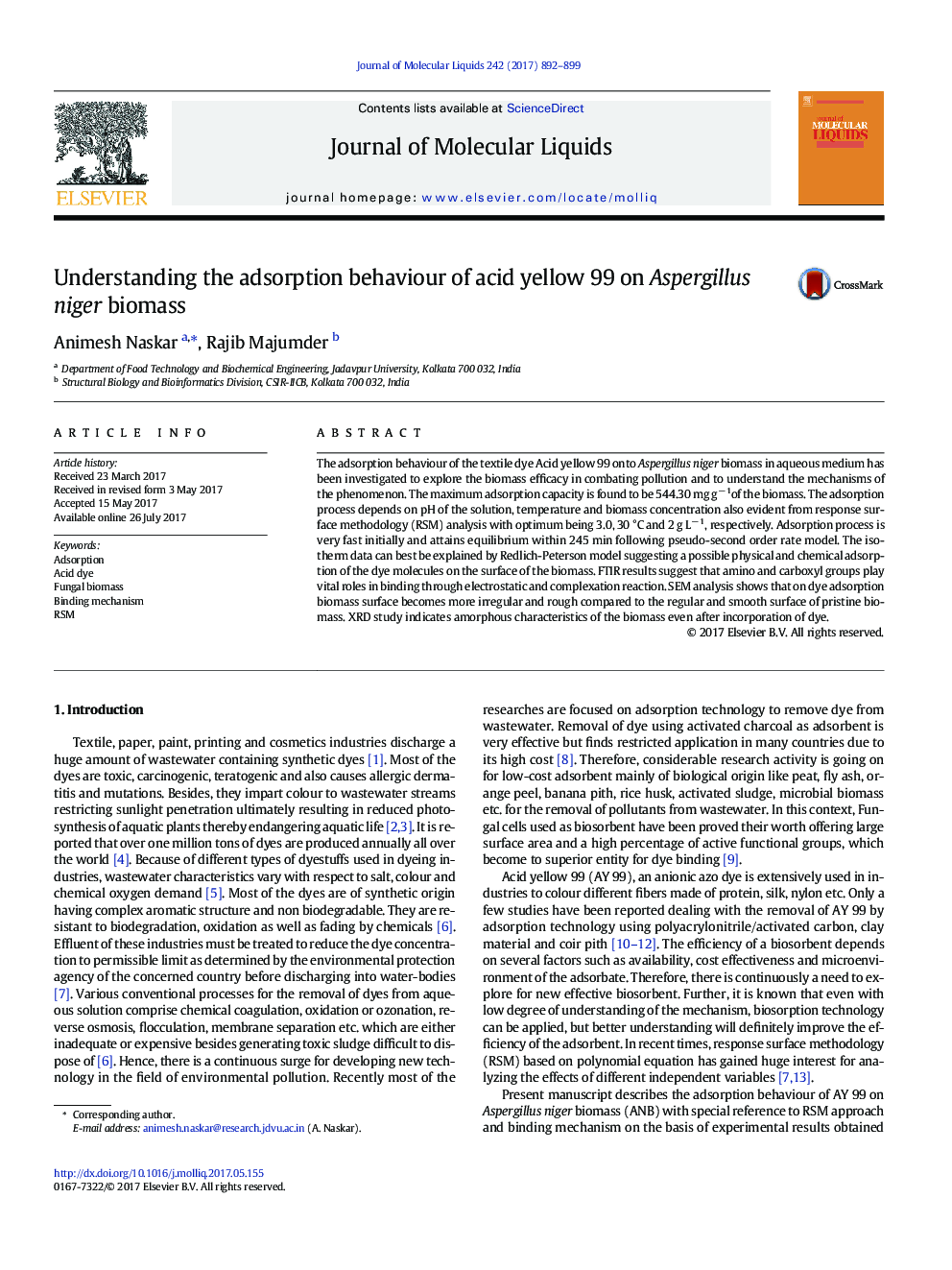| Article ID | Journal | Published Year | Pages | File Type |
|---|---|---|---|---|
| 5408490 | Journal of Molecular Liquids | 2017 | 8 Pages |
Abstract
The adsorption behaviour of the textile dye Acid yellow 99 onto Aspergillus niger biomass in aqueous medium has been investigated to explore the biomass efficacy in combating pollution and to understand the mechanisms of the phenomenon. The maximum adsorption capacity is found to be 544.30 mg gâ 1of the biomass. The adsorption process depends on pH of the solution, temperature and biomass concentration also evident from response surface methodology (RSM) analysis with optimum being 3.0, 30 °C and 2 g Lâ 1, respectively. Adsorption process is very fast initially and attains equilibrium within 245 min following pseudo-second order rate model. The isotherm data can best be explained by Redlich-Peterson model suggesting a possible physical and chemical adsorption of the dye molecules on the surface of the biomass. FTIR results suggest that amino and carboxyl groups play vital roles in binding through electrostatic and complexation reaction. SEM analysis shows that on dye adsorption biomass surface becomes more irregular and rough compared to the regular and smooth surface of pristine biomass. XRD study indicates amorphous characteristics of the biomass even after incorporation of dye.
Related Topics
Physical Sciences and Engineering
Chemistry
Physical and Theoretical Chemistry
Authors
Animesh Naskar, Rajib Majumder,
